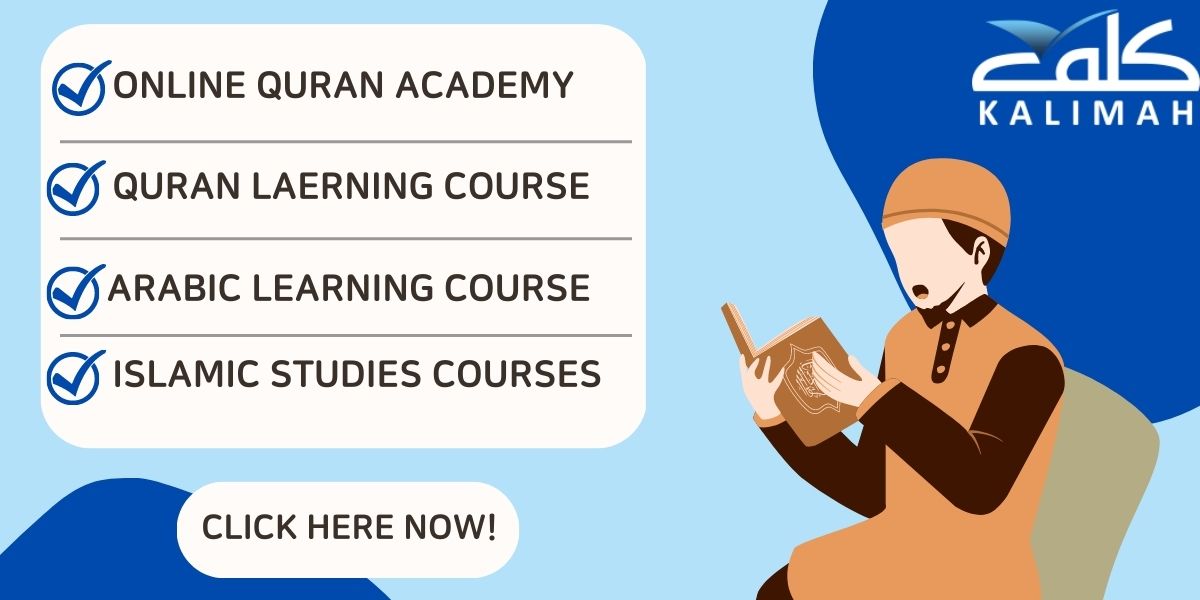In a Nutshell: Learning Arabic in Arabic through full immersion is like diving into a vibrant tapestry of culture and language, where every conversation and interaction is a brushstroke in mastering fluency. By surrounding yourself with Arabic in its natural setting—through media, conversation, and daily practice—you not only develop a genuine accent but also uncover the subtleties of its rich cultural landscape.
As a child growing up in Egypt, the Arabic language was my playground. The call to prayer echoing through the village’s alleys, the vibrant discussions in the local cafes, the intricate calligraphy adorning historic buildings—all were part of the symphony of Arabic that enveloped my life. This rich tapestry of language and culture is what I aim to share with the readers and learners at Kalimah.
Learning Arabic in Arabic (تعلّم اللغة العربية باللغة العربية) isn’t just a method; it’s a philosophy. It’s about unlocking the true essence of the language—its nuances, its poetry, its soul. It’s about experiencing the world as native speakers do, through the lens of their words and expressions.
Why Learn Arabic in Arabic?
Learning Arabic with Arabic material provides a more comprehensive and enriching language learning experience, helping you achieve fluency faster and connect more deeply with the language and culture. When you learn the language in its native context, you:
- Develop a Native-Like Accent: Immersing yourself in Arabic pronunciation from the start helps you develop a natural accent and rhythm.
- Understand Cultural Nuances: Language and culture are deeply intertwined. Learning Arabic in Arabic allows you to grasp the subtleties of expressions, humor, and social interactions.
- Boost Your Confidence: Speaking and thinking in Arabic empowers you to communicate effectively and confidently with native speakers.

How to Learn Arabic in Arabic?
Imagine stepping into a vibrant classroom where the language spoken is entirely in Arabic. From day one, your teacher greets you with a warm “مرحبا” Marhaba!, meaning “Welcome.” This is the essence of learning Arabic in Arabic—total immersion.
Learning a language through immersion involves using the target language for all instructions, conversations, and activities. It might sound daunting, but this method mirrors how we naturally learn our first language.
As a passionate native Arabic teacher, I can tell you that this approach not only accelerates learning but also deepens your cultural understanding.
1. Surround Yourself with Arabic (أحِط نفسك باللغة العربية)
- Immersive Environment: If possible, spend time in an Arabic-speaking country or community. Interact with native speakers, listen to their conversations, and immerse yourself in the language’s natural rhythm and flow.
- Label Your Environment: Label items around your home in Arabic to build your vocabulary and get used to seeing and thinking in Arabic.
- Listen: Tune into Arabic podcasts, radio stations, and audiobooks. Start with slower-paced content designed for learners, and gradually challenge yourself with more complex material.
- Watch: Watch Arabic movies, TV shows, documentaries (وثائقيات), and vlogs. Utilize subtitles in Arabic or English to aid your comprehension.
- Read: Explore Arabic children’s books, short stories, novels, and newspapers. Look for resources with vocabulary lists and explanations to enhance your understanding.
2. Focus on Conversation
Connect with native Arabic speakers (تواصل مع أصحاب اللسان العربي) through language exchange platforms or online forums. Practice speaking with them regularly, even if it’s just for a few minutes each day.
Participate in online or offline Arabic conversation groups (مجموعات محادثة بالعربية) to engage in meaningful discussions and receive feedback from other learners and instructors.
3. Think in Arabic (فكر بالعربية)
Describe your thoughts and actions in Arabic, even if it’s just in your head. This will train your brain to think in the new language.
Stick Arabic labels on household items to reinforce vocabulary and create a mini-immersion environment at home.
You can also write about your experiences, thoughts, and feelings in Arabic. This is a great way to practice writing and self-expression.
4. Utilize Effective Learning Tools
Invest in a good Arabic-Arabic dictionary (قواميس عربية عربية) to look up unfamiliar words and deepen your understanding of their nuances and connotations.
Many resources offer structured learning paths specifically for Arabic learners, such as the immersive courses at Kalimah. Our online courses offer a comprehensive and immersive learning experience, with instruction, materials, books, and interactions conducted in Arabic.

Additionally, Engage with online forums and communities to ask questions, share resources, and connect with fellow learners.
4. Learn Grammar and Structure in Arabic
Choose grammar resources that are taught entirely in Arabic. This will help you understand grammatical concepts in their native context and reinforce your overall language skills.
Don’t hesitate to ask for help from native speakers or Arabic language instructors when you encounter grammatical challenges.
5. Embrace the Culture
Explore the rich history (تاريخ زاخر), traditions, and customs of the Arab world. This will deepen your appreciation for the language and help you understand its cultural context.
Delve into the world of Arabic literature and poetry to appreciate the beauty and expressive power of the language.
Attend cultural events, festivals, and gatherings where you can interact with native speakers and immerse yourself in the Arabic-speaking community.
Read more about How To Learn Arabic In 10 Days?
How to Write Arabic in Arabic?
Writing in Arabic opens a window into a rich literary heritage. The first step is mastering the Arabic script. Arabic is written from right to left, and its letters change shape based on their position in a word. Let’s start with the basics:
- ألف باء (Alif Baa): The Arabic Alphabet.
- خط النسخ (Khatt al-Naskh): The Naskh script, commonly used in print.
- خط الرقعة (Khatt al-Ruq’ah): The Ruq’ah script, simpler and used for handwriting.

Begin by writing simple words like “بيت” (bayt), meaning “house,” and gradually progress to more complex sentences. Use calligraphy books or online resources to perfect your script.
Keep a journal in Arabic, even if you start with just a few sentences a day. Gradually, your confidence and skill will grow.
Use calligraphy practice sheets: These can help you perfect the form and flow of your handwriting.

*This image is excerpted from the Kalima Center‘s Arabic language curriculum
How to Speak Arabic in Arabic?
Speaking Arabic fluently involves daily practice and active engagement. Here are some tips to get you started:
- Practice Daily Conversations: Engage in dialogues about everyday topics like greetings, shopping, and dining.
- Join Speaking Clubs: Participate in Arabic language clubs or online forums.
- Use Multimedia: Watch Arabic movies and listen to Arabic podcasts.
At Kalimah Center, we offer interactive group classes where you can practice with native speakers and receive immediate feedback.

What Are the Best Resources for Learning Arabic in Arabic?
Embarking on your journey to learn Arabic in Arabic opens up a world of authentic language and cultural immersion. Here are some invaluable resources to guide you along the way:
1. Online Arabic Courses
Kalimah Center: Our online courses provide a comprehensive and immersive Arabic learning experience. With lessons taught entirely in Arabic if the learner needs so, interactive exercises, and opportunities to practice conversation with native speakers, Kalimah is an ideal choice for those committed to learning Arabic authentically.

2. Arabic-Arabic Dictionaries (قواميس عربية عربية):
- Al-Mawrid: A classic Arabic-Arabic dictionary known for its extensive vocabulary and clear definitions.
- Almaany: This comprehensive online Arabic dictionary provides definitions, examples, and usage notes in Arabic, helping you expand your vocabulary and deepen your understanding of the language.
- Lisaan Al-Arab: A comprehensive historical dictionary that delves into the etymology and evolution of Arabic words.
- Al-Wasit: A modern Arabic-Arabic dictionary with concise definitions and examples of usage.
3. Arabic Media
- Al Jazeera: Watch news broadcasts and documentaries to immerse yourself in authentic Arabic language usage and learn about current events in the Arab world.
- Arabic Podcasts: Tune into Arabic podcasts that discuss various topics, such as current events, culture, and language learning. Some popular options include Rumooz Podcast “بودكاست رموز” This podcast tells the stories of influential figures in Arab history, offering a unique blend of history and language learning.

4. Children’s Resources
- Arabic Children’s Books (كتب الأطفال العربية): Start with simple picture books and gradually progress to more complex stories as your language skills improve.
- Arabic Cartoons (رسوم متحركة عربية): Watch animated shows designed for Arabic-speaking children to learn basic vocabulary and grammar in an entertaining way.
5. Community and Conversation
- Language Exchange Platforms: Connect with native Arabic speakers through platforms like HelloTalk, Tandem, or iTalki to practice conversation and exchange language tips.
- Online Forums and Groups: Join online communities dedicated to learning Arabic to ask questions, share resources, and connect with fellow learners.
Read more about: How Can I Learn Arabic by Myself?
How Do You Say “Arabic” in Arabic?
In Arabic, the word “Arabic” is “العربية” (al-‘arabīyah). Here’s how to spell Arabic in Arabic it: ا-ل-ع-ر-ب-ي-ة.
- ا (Alif)
- ل (Lam)
- ع (Ayn)
- ر (Ra)
- ب (Ba)
- ي (Ya)
- ة (Ta Marbuta)
Expressing Common English Sentences in Arabic
How to say in Arabic I want to learn Arabic, how to say do you speak Arabic, how to say I don’t speak Arabic, how to say I want to learn arabic, and more sentences. To help you get started, here are some essential English sentences translated into Arabic, along with their transliterations:
| English Sentence | Arabic Sentence | Transliteration |
| I want to learn Arabic | أريد أن أتعلم العربية | Uridu an ataalam al-arabiya |
| Do you speak Arabic? | هل تتكلم العربية؟ | Hal tatakallam al-arabiya? |
| I don’t speak Arabic | أنا لا أتكلم العربية | Ana laa atakallam al-arabiya |
| I want to learn Arabic | أريد أن أتعلم العربية | Uridu an ataalam al-arabiya |
| Where is the bathroom? | أين الحمام؟ | Ayn al-hammaam? |
| How much does this cost? | بكم هذا؟ | Bikam hadha? |
| Can you help me? | هل يمكنك مساعدتي؟ | Hal yumkinuka musaadati? |
| I need a doctor | أحتاج إلى طبيب | Ahtaju ila tabeeb |
Your Arabic Learning Oasis: Kalimah
At Kalimah, we offer a comprehensive range of online courses designed to immerse you in the Arabic language and culture. Our experienced instructors, all native Arabic speakers, will guide you every step of the way, providing personalized feedback and support.
Whether you dream of reciting the Quran in its original language, negotiating a business deal in Dubai, or simply connecting with Arabic-speaking friends and family, Kalimah is your gateway to fluency and cultural understanding.
With Kalimah, you’ll gain access to:
- Live Classes with Native Speakers: Learn from passionate instructors who are eager to share their love for the Arabic language and culture.
- Interactive Exercises and Quizzes: Reinforce your learning through engaging activities that test your comprehension and retention.
- Cultural Immersion Modules: Discover the rich traditions, history, and literature of the Arab world.
- Personalized Feedback and Support: Receive individual attention and guidance tailored to your unique learning style and goals.
Try your FREE TRIAL today and let us be your guide on this extraordinary journey!

Discover Our Comprehensive Programs:
- Learn Arabic Online (Main Program):
- Develop fluency and confidence in your Arabic communication skills.
- Dive into interactive materials and engaging presentations.
- Learn Arabic for Kids:
- Foster a love for Arabic in your children through science-based, child-friendly classes.
- Connect them to their faith, culture, and identity.
- Learn Quran Online:
- Master Quranic recitation and Tajweed rules with Ijazah-certified teachers.
- Deepen your understanding of Allah’s revelation.

Conclusion:
Learning Arabic through Arabic immersion, or “تعلّم اللغة العربية باللغة العربية,” offers an unparalleled way to grasp the language’s essence and cultural depth. By immersing yourself fully in Arabic, you develop a natural accent, understand cultural nuances, and gain confidence in communication.
This approach involves surrounding yourself with Arabic through various media, engaging in conversation, and even thinking in the language to accelerate fluency.
To effectively learn Arabic in Arabic, utilize resources such as immersive courses at Kalimah Center, Arabic-Arabic dictionaries, and Arabic media like podcasts and children’s books. Engage with native speakers through language exchange platforms and community groups to practice and refine your skills.
Embrace the rich cultural context of the language through literature, history, and cultural events to enhance your learning experience and achieve a deeper connection with Arabic.














